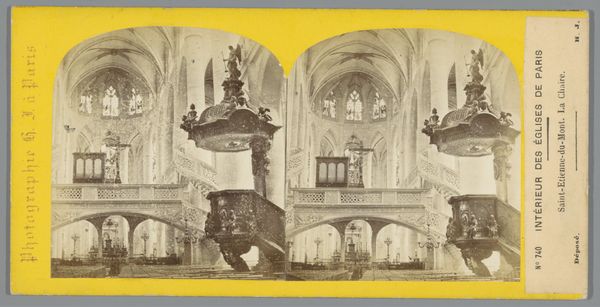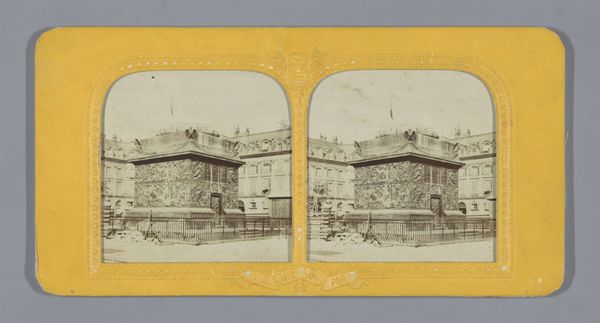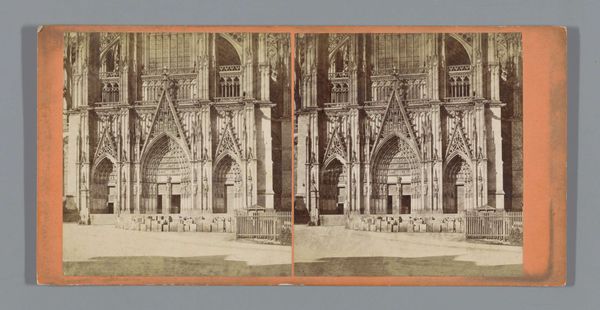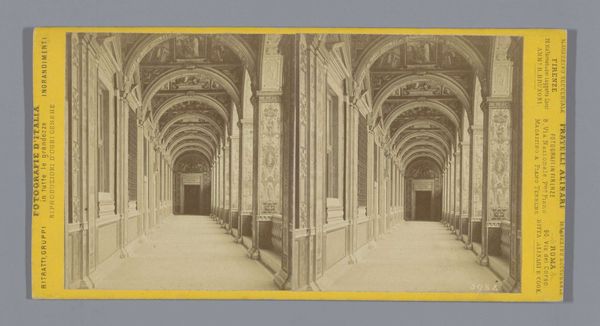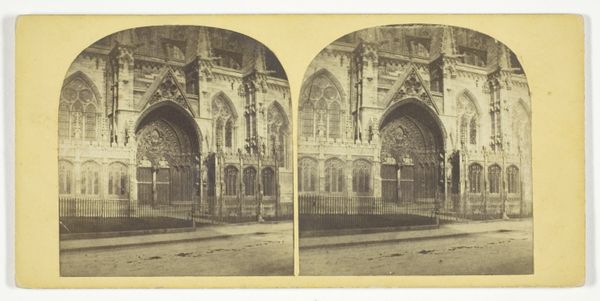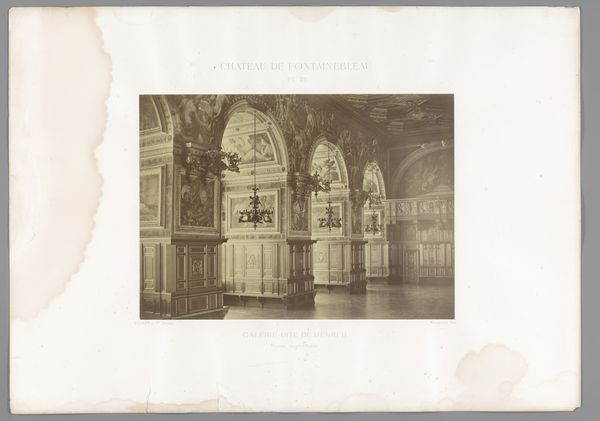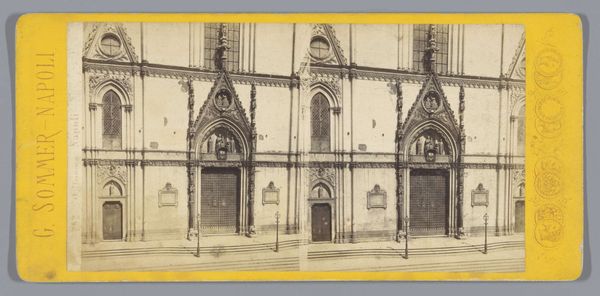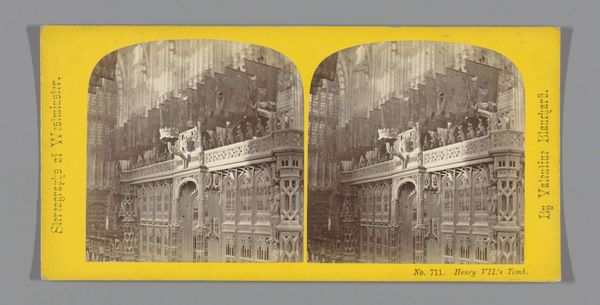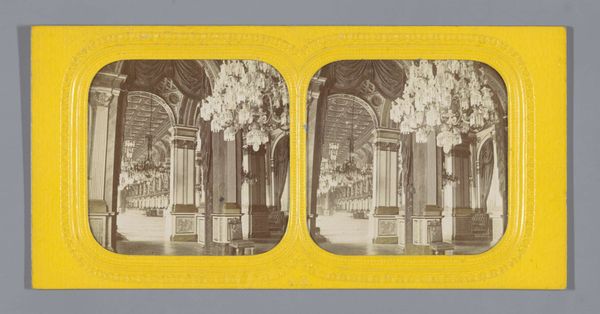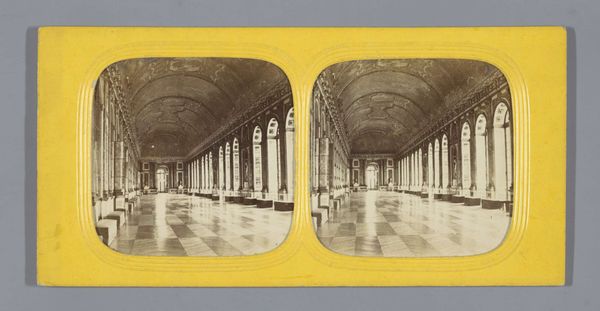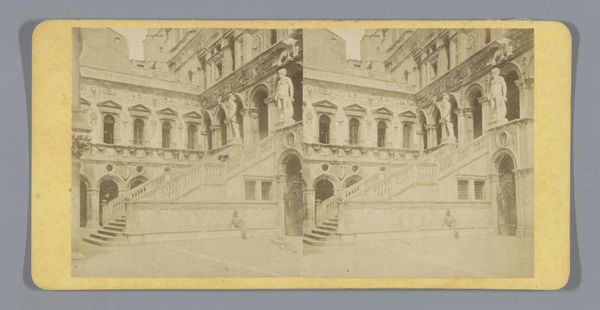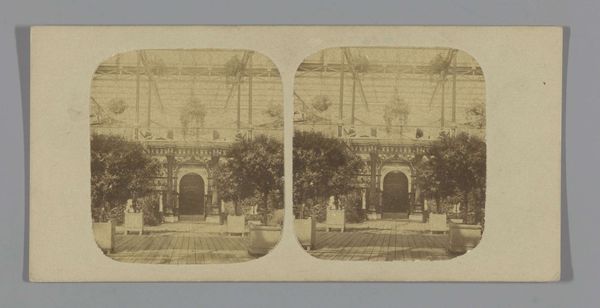
photography, gelatin-silver-print
#
landscape
#
photography
#
gelatin-silver-print
#
realism
Dimensions: height 83 mm, width 173 mm
Copyright: Rijks Museum: Open Domain
Editor: This is Pieter Oosterhuis's "View of the Choir in the St. Bavo Church in Haarlem," a gelatin silver print from between 1860 and 1885, housed at the Rijksmuseum. I’m struck by how the heavy metal gate dominates the foreground, almost obscuring the interior of the church. How do you read this image? Curator: The gate's prominence speaks volumes. Consider the burgeoning cultural heritage movement of the 19th century. Churches, once purely spaces of worship, were becoming objects of national and civic pride. The gate, while physically separating the viewer, also frames and protects this valuable space. Do you see any signs of wear and tear on the church structure itself? Editor: Yes, now that you mention it, there seem to be stains and spots on the ceiling near the windows, making the walls seem rather dull. Curator: These details reflect the social realities of the time. Churches were not always meticulously maintained. These "flaws" humanize the building and subtly contrast with the industrial perfection implied by the iron gate, which probably represents new money and social stratification. What does this contrast tell you about the relationship between religion, capital, and public access? Editor: Hmm, that's interesting! So, is Oosterhuis making a statement about how money controls even access to religious spaces? Almost like the gate is as much about keeping people out as it is about guarding something valuable? Curator: Precisely! Or perhaps the rise of landscape photography and the rise of realism aimed to showcase real public buildings and objects like this. It's a comment on how the perception and usage of this public religious building changed through cultural shift and through how the public sphere was imagined then. Editor: I hadn't thought about it that way. I was focused on the aesthetics, but you've helped me see the social commentary embedded in the image. Thanks! Curator: Indeed! By looking at these churches or cathedrals we learn the socio-political context.
Comments
No comments
Be the first to comment and join the conversation on the ultimate creative platform.

